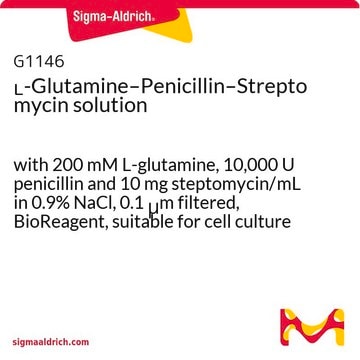A6964
Accutase® solution
sterile-filtered, suitable for cell culture
Synonym(s):
Cell detachment solution
About This Item
Recommended Products
sterility
sterile-filtered
Quality Level
form
liquid
concentration
400-600 units/mL
technique(s)
cell culture | mammalian: suitable
single cell analysis: suitable
impurities
≤1 EU/mL endotoxin
pH
6.8-7.8
shipped in
dry ice
storage temp.
−20°C
General description
Application
Suitable for use in preparation of single cell suspension for sequencing.
Features and Benefits
Formula variant
Preparation Note
Legal Information
related product
Storage Class Code
12 - Non Combustible Liquids
WGK
WGK 1
Flash Point(F)
Not applicable
Flash Point(C)
Not applicable
Certificates of Analysis (COA)
Search for Certificates of Analysis (COA) by entering the products Lot/Batch Number. Lot and Batch Numbers can be found on a product’s label following the words ‘Lot’ or ‘Batch’.
Already Own This Product?
Find documentation for the products that you have recently purchased in the Document Library.
Customers Also Viewed
Protocols
Mesenchymal Stem Cells and Media enable in vitro expansion and differentiation, vital for various tissue sources.
Mesenchymal Stem Cells and Media enable in vitro expansion and differentiation, vital for various tissue sources.
Mesenchymal Stem Cells and Media enable in vitro expansion and differentiation, vital for various tissue sources.
Mesenchymal Stem Cells and Media enable in vitro expansion and differentiation, vital for various tissue sources.
Related Content
Defined culture conditions. Consistent growth of human cancer cell lines in PromoCell’s serum-free/xeno-free Cancer Cell Line Media-XF. Explore over 350 PromoCell products on Sigma.com
Our team of scientists has experience in all areas of research including Life Science, Material Science, Chemical Synthesis, Chromatography, Analytical and many others.
Contact Technical Service















